About.to.be.banned
BANNED

- Joined
- Jan 27, 2015
- Messages
- 311
- Reaction score
- -3
- Country
- Location
212A uses fuel cells AIP which is better than Stirling used on Gotland and Soryu.
Is a normal size all Fuel cell Submarine possible?
Follow along with the video below to see how to install our site as a web app on your home screen.
Note: This feature may not be available in some browsers.

212A uses fuel cells AIP which is better than Stirling used on Gotland and Soryu.

Not sure what u are asking. Here sizes of today fuel cell subs:Is a normal size all Fuel cell Submarine possible?

Not sure what u are asking. Here sizes of today fuel cell subs:
Type 209-1200 Okeanos
1,100 /1,285 t 55.9 m before modernization
1,480/1,615 t 62.3 m after AIP modernization.
Type 212A
1,450/1,830 t 56 m
Type 214
1,690/1,860 t 65 m
Dolphin II
2,050/2,400 t 68.6 m

But 209 would never qualify due to absense of non-magnetic steel. It truely was/is an export product.Deep water operation needs range and speed. 206 had poor range and speed compare to 209.
Right, so how is that differen from what I said.No, Type 214 is 209 derivative employing 212A technologies.
U212 / U214 Submarines - Naval TechnologyHDW has developed the type 214 submarine, which is a further improvement on the type 212.



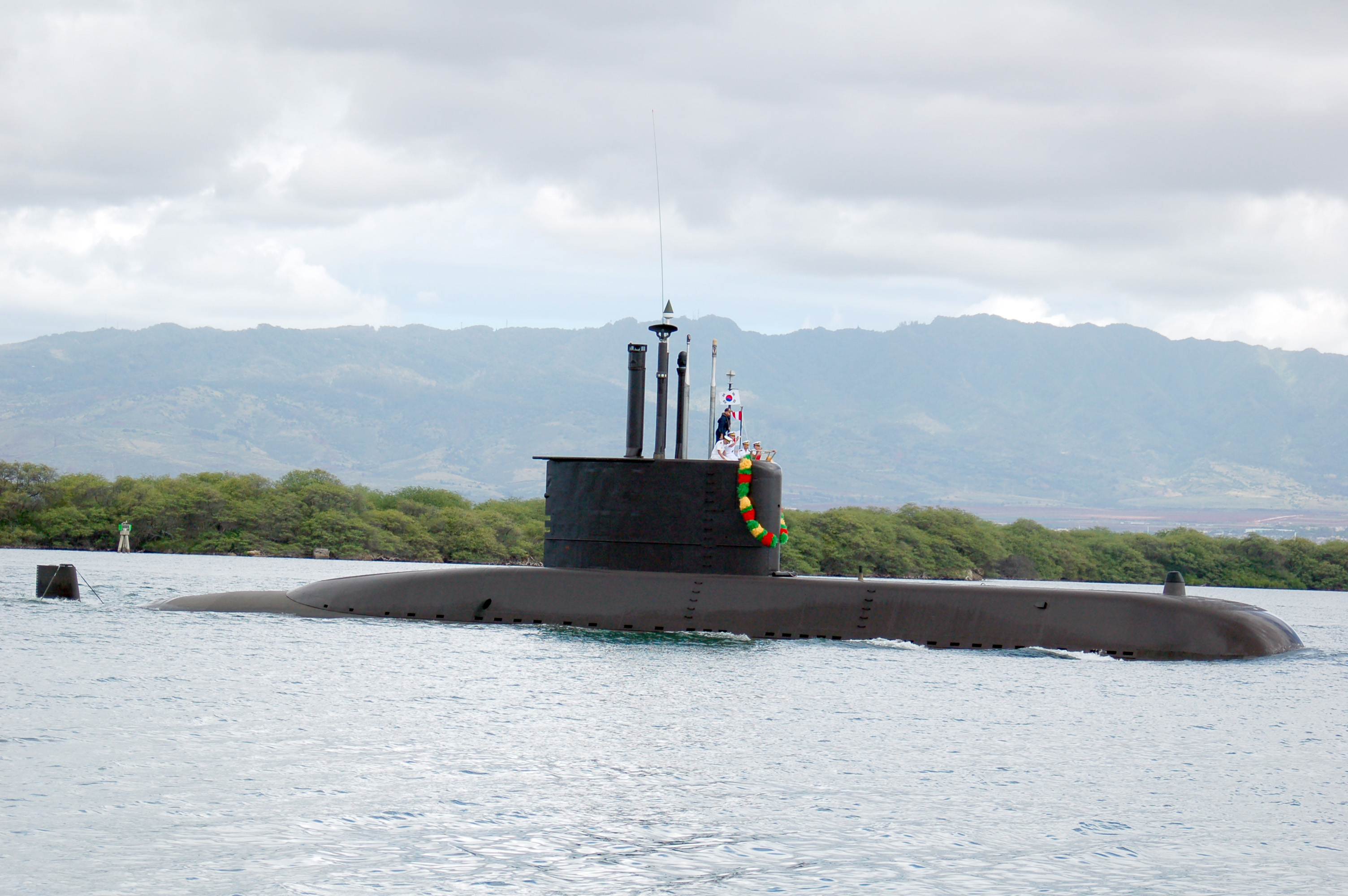
No, because Dolphin temporally preceeds 212A.Dolphin 1 = enlarged 212A without AIP
Dolphin 2 = even more enlarged 212A with AIP from 214.
212A uses fuel cells AIP which is better than Stirling used on Gotland and Soryu.

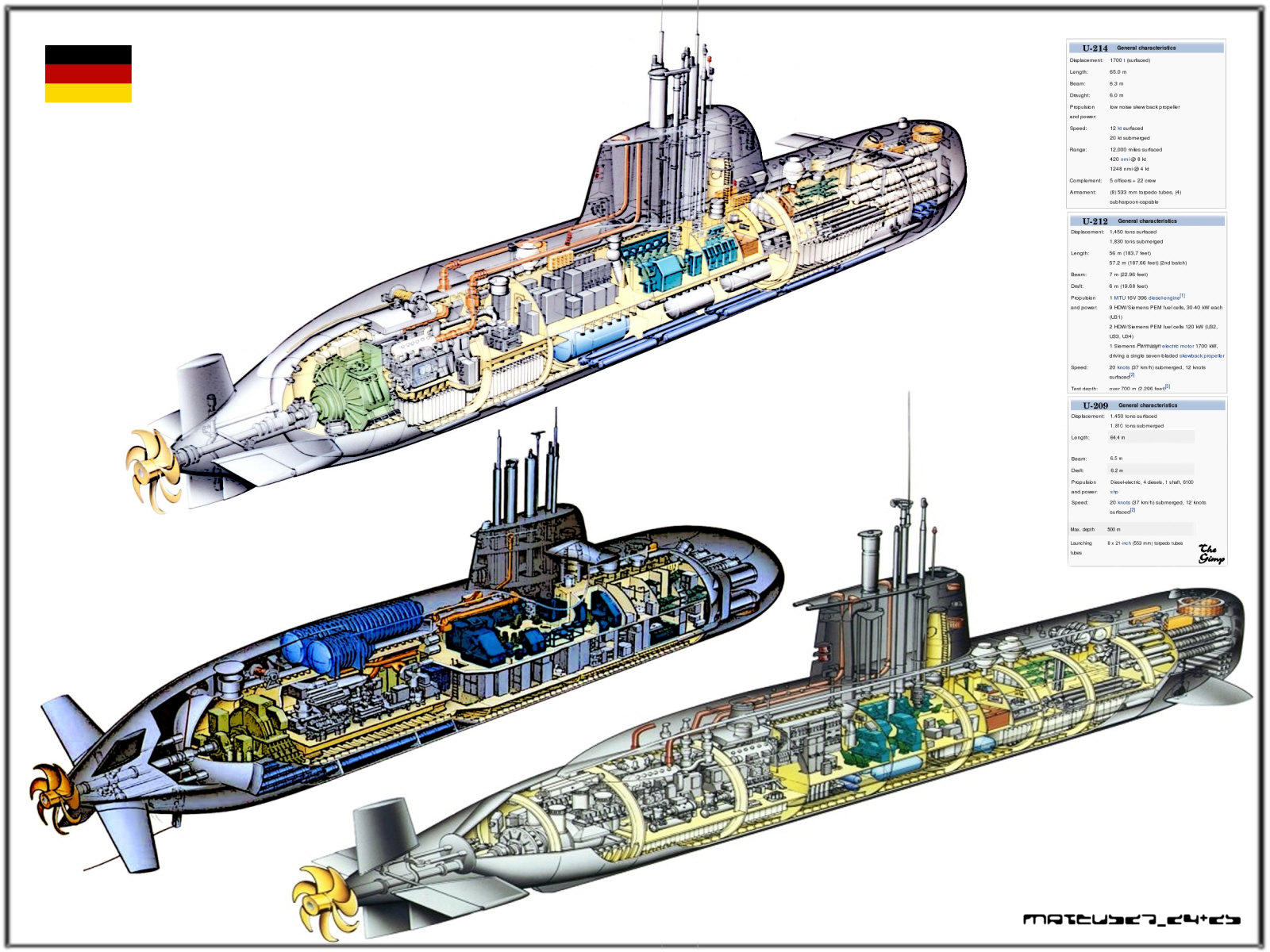

Hmm. Once again:But 209 would never qualify due to absense of non-magnetic steel. It truely was/is an export product.
U said that 214 is an improvement of 212A. But its not. 214 is mish mash of 209 and 212A. Rather downgrade of 212A.Right, so how is that differen from what I said.
212A delayed because of AIP issues. Dolphin uses same technologies as 212: full teardrop, 3 decks, X fins... but lacks AIP.No, because Dolphin temporally preceeds 212A.
I see. No its not possible.I meant doing away with Diesel engine altogether and running Sub solely on fuel cells.

Hmm. Once again:
209 is good for ocean bad for Baltic.
206 is good for Baltic bad for ocean.

Again, the 209 was purposely designed for export, not to meet any German navy requirements. Why on earth would they buy it? Flawed logic.Germans bought 206 and never bought 209. Thus Baltic is much higher priority to them.
Naval Technology , a professional journal, said so. They point out that 214 is in some respects better than 212A, e.g. in diving depth: "Type 214 has an increased diving depth of more than 400m, due to improvements in the pressure hull materials." which of course are NOT non-magnetic.U said that 214 is an improvement of 212A. But its not. 214 is mish mash of 209 and 212A. Rather downgrade of 212A.
212A delayed because of AIP issues. Dolphin uses same technologies as 212: full teardrop, 3 decks, X fins... but lacks AIP.
Dolphin-class submarine - Wikipedia, the free encyclopediaThe Dolphin class is actually two related sub-classes of diesel-electric submarine developed and constructed by Howaldtswerke-Deutsche Werft AG (HDW), Germany for the Israeli Navy. The first three members of the class were based on the export-only German 209-class submarines, but greatly modified and enlarged, and are thus not designated as members of the 209 family. The Dolphin 1 sub-class is slightly larger than the German Navy Type 212 in length and displacement. The three newer air-independent propulsion (AIP) equipped boats are similar to the Type 212 vessels currently used by the German navy in underwater endurance, although the AIP Dolphins are 12 metres (39 ft) longer and are nearly 500 tonnes heavier in submerged displacement, and have a larger crew than either the Type 212 or the Type 214."
First budgeted in July 1989 and ordered in January 1990, by November the order was canceled due to budget reallocation aimed at countering Iraqi threats leading up to the 1991 Gulf War.The first two (Dolphin and Leviathan) were fully donated by Germany to restart the program and the third (Tekumah) received a 50% subsidy. To compensate Israel for war related damage and economic losses and keep German shipyards occupied in the post Cold War defense spending downturn
In 2006 Israel signed a contract with ThyssenKrupp to purchase two additional submarines from its HDW subsidiary. The two new boats are an upgraded version displacing 28% heavier than the older Dolphins, featuring an air-independent propulsion system, similar to the one used on German Type 212 submarines
in 2011, Israel ordered a sixth Dolphin-class submarine
Google Translate=The basis of Type 212
Early 80s studied German companies, led by Howaldtswerke-Deutsche Werft (HDW), the potential of propulsion for submarines which one would not be dependent on the outside, without using nuclear energy. Late 80s could this consortium ARGE 212 the first systems to be tested was placed on a submarine and the basis for the later Class 212.
Cooperation with Norway
The German navy was not concerned with the type 212 as a replacement for the small type 205 and 206 submarines in service at that time. Germany signed in 1983 an agreement with Norway for the new Type 210 submarine, which would be an important part of Norwegian technology provide a platform designed by Germany. This project failed because the Germans wanted a larger submarine and the Norwegians a boat that could dive deeper.
The Norwegian electronics for the Type 210 subs were transferred to the project Type 211, which should yield 12 larger submarines that could operate outside the Baltic Sea. These boats were placed in service since the early 90s and had a diesel-electric propulsion without AIP. In 1987 the project was stopped, however, because the pressure on the budget in addition to the newly constructed Brandenburg class frigates was too big.
By Type 211 to 212 and 212A
However, the replacement of the existing submarines continued, but now in a different form. The work for the Type 211 was used for the Type 212. A new design, with AIP and a smaller number of boats. In 1994 the contract was signed for four Type 212 submarines for the German Navy with the ARGE 212 consortium. Two years later joined by Italy, however, this led to revision of the design and the Type 212A was born.
The construction of the first submarine, the U 31, began in 1998.The German boats were built by Howaldtswerke-Deutsche Werft (HDW) and Thyssen Nordseewerke (TNSW). The trial run of Germany's new pride took place in August 2003. In 2005, this first was placed in service.
U-212A Class Patrol Submarine | Military-Today.comIn 1992, ARGE 212 (a consortium of Howaldtswerke-Deutsche Werft and Thyssen Nordseewerke, supported by IKL) completed the initial design of the U-212A class, and an initial four boats were authorized in July 1994. However, it was only in July 1998 that the first metal was cut as the programme had been slowed to allow the incorporation of changes (including improved habitability and a greater diving depth) to maximize commonality with two boats ordered by Italy.

Because it has much better range, speed and endurance than 206 and thus better suited for oceans.Why on earth would they buy it?
Depth is classified. Here what the official page says:Naval Technology , a professional journal, said so. They point out that 214 is in some respects better than 212A, e.g. in diving depth: "Type 214 has an increased diving depth of more than 400m, due to improvements in the pressure hull materials." which of course are NOT non-magnetic.

They did not buy it because it didn't fit German naval requirements. Type 209 is an export design, not intended or particularly suitable for domextic consumption.They did not buy it because it was not ther priority.
As is the case with all operational subs. DUH.Depth is classified. Here what the official page says:
So what, even if it is the peak that doesn't mean it is the best allround.The submarines of the first and second batches of HDW Class 212A can rightly be called "the peak of German submarine technology".
Note the difference between 'design principles' and 'design'And here 214
On the basis of the proven design principles of the HDW Class 209 family with
additional incorporation of innovative features of HDW Class 212A,
ThyssenKrupp Marine Systems developed the HDW Class 214 submarine.
ThyssenKrupp Marine Systems
So 212A is the peak and 214 is downgrade.
Irrelevant, the point is that there are 2 subclasses, one without AIP and one with AIP. The initial Dolhpins are NOT related to 212A. ONly with the second batch is there a technological connection. Dolphin "1" developmentally follows 209/1300/1400. As indicated in:Wiki link is wrong. Dophin has nothing to do with the 209. It has 3 decks, X tail and full teardrop.


209 is much better for ocean then 206. But Germans did not need it because their priority is Baltic.They did not buy it because it didn't fit German naval requirements. Type 209 is an export design, not intended or particularly suitable for domextic consumption.
Peak means the best.So what, even if it is the peak that doesn't mean it is the best allround.
209 - square nose, 2 deck, regular tail.Note the difference between 'design principles' and 'design'
Basically it says "we've develop anothers export oriented sub (like 209 was), in corporating innovatie 212A features"
That does not mean 214 is a downgrade. It is a different sub. Just as 209 was developed for a different market.
Irrelevant, the point is that there are 2 subclasses, one without AIP and one with AIP. The initial Dolhpins are NOT related to 212A. ONly with the second batch is there a technological connection. Dolphin "1" developmentally follows 209/1300/1400. As indicated in:

Going round in circles now. German navy NEVER CONSIDERED buying 209.209 is much better for ocean then 206. But Germans did not need it because their priority is Baltic.
For same reason Germans would not need the nuclear one.
If it has the newest gizmo's but the use of nonmagnetic steel (advanced tech also) limites its diving depth (which is by no means small), it can be the peak withou being the best IN ALL RESPECTS of performance.Peak means the best.
209 - square nose, 2 deck, regular tail.
214 - square nose, 2 deck, regular tail.
Dolphin - full teardrop, 3 deck, X shape tail.
212A - full teardrop, 3 deck, X shape tail.
.
212a

214

X- versus + tail, ok
divingplanes on coning tower versus on forward hull ...ok
But ... What 3 decks? What teardrop?


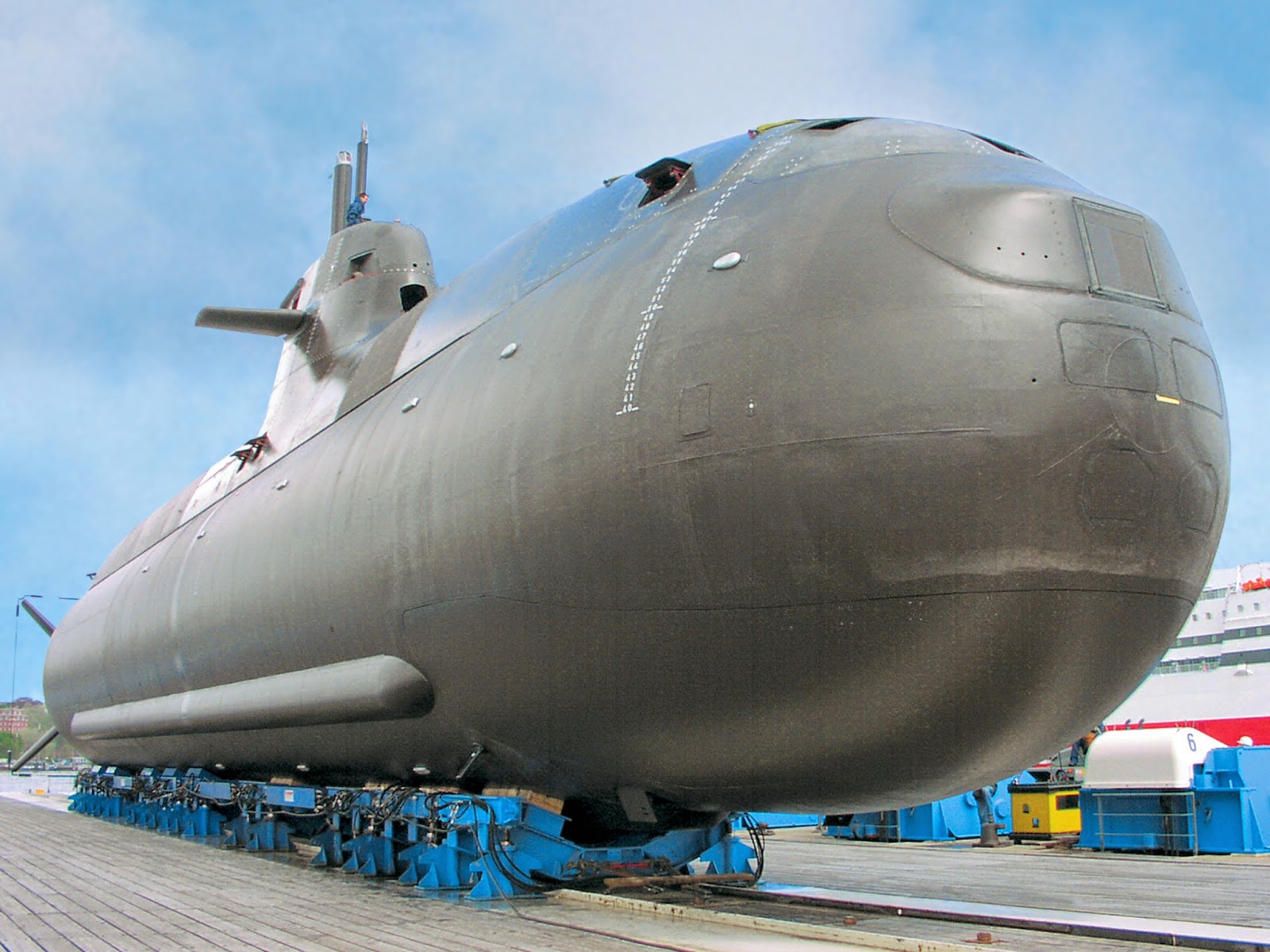



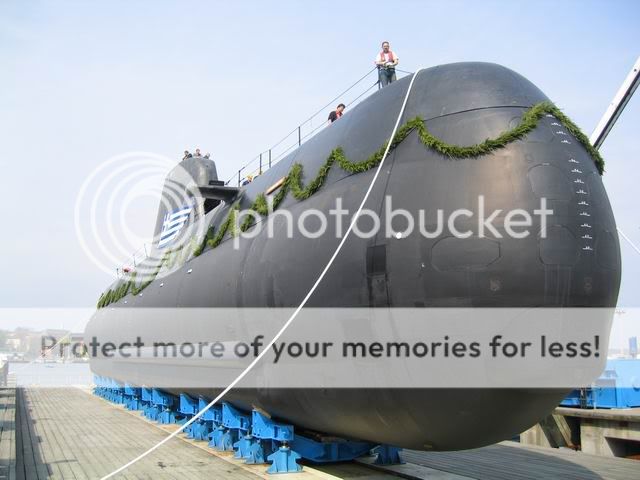


Because they are not interested in subs which are not suited for Baltic.Going round in circles now. German navy NEVER CONSIDERED buying 209.
212 is the peak = best. 214 is a mich mash of 209 and 214 => dongrade of 212. U can clearly see that in construction and it is openly said on official page.If it has the newest gizmo's but the use of nonmagnetic steel (advanced tech also) limites its diving depth (which is by no means small), it can be the peak withou being the best IN ALL RESPECTS of performance.
I made that chart.
See the scheme above.X- versus + tail, ok
divingplanes on coning tower versus on forward hull ...ok
But ... What 3 decks? What teardrop?



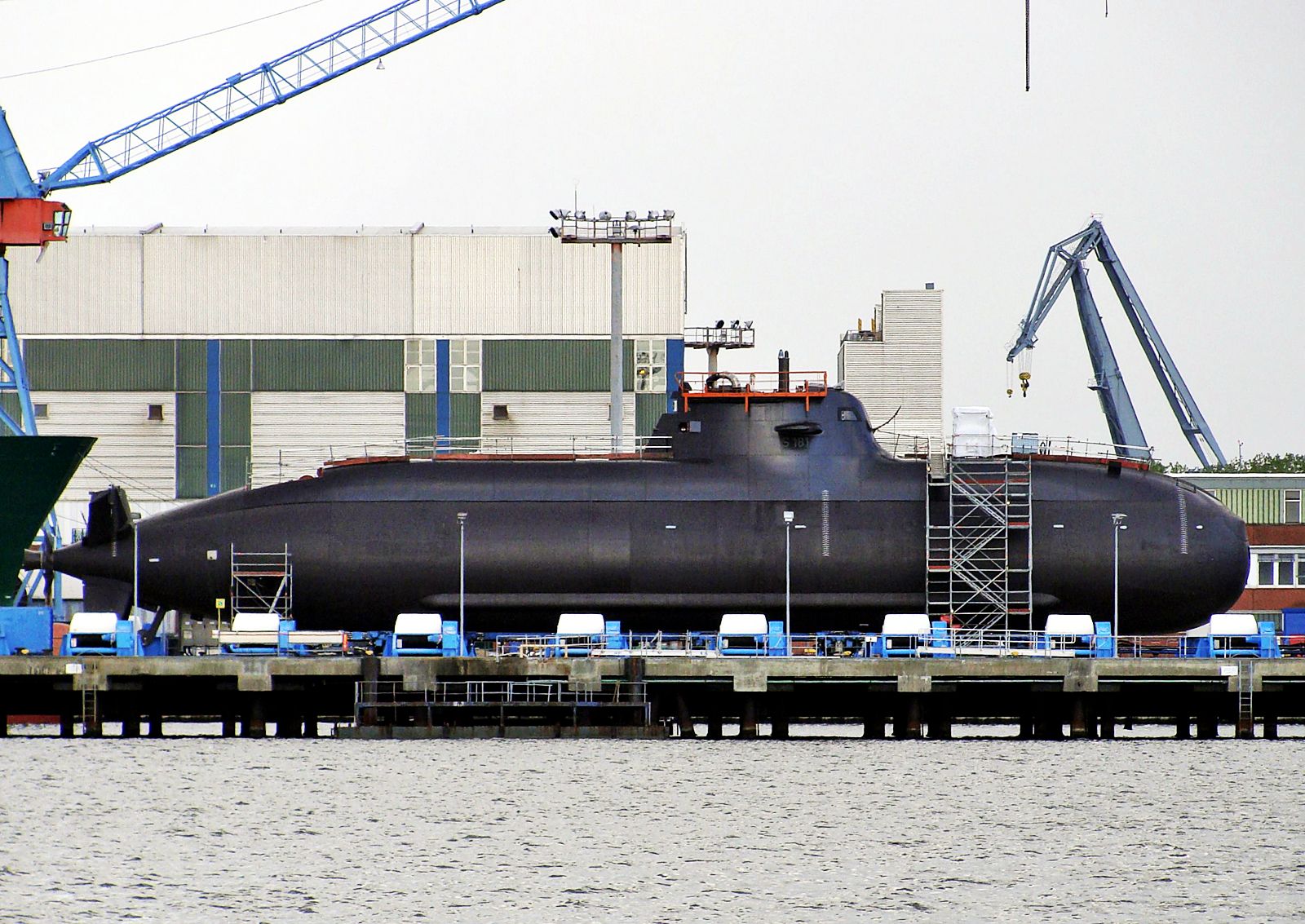

Or because their role within NATO was blocking the Baltic, and you don't do that in the Atlantic. As the role of NATO changed, after the collapse of the Soviet Union, so did Germany's and Germany's navy's tasks change and so they required a different boat. The Swedes have been producing and operating 209 sized subs in the Baltic for decades (Sjöormen, Näcken- and Västergötland classes.) and these are not using nonmagnetic steel: there simply is not an argument against using 209 in the Baltic, although that is not the area for which it is optimized.Because they are not interested in subs which are not suited for Baltic.
ThyssenKrupp Marine SystemsHDW Klasse 214
Die HDW Klasse 214 ist die Fortführung der Erfolgsgeschichte der HDW Klasse 209. Ein Entwurf speziell für den Exportmarkt, der sowohl in Deutschland als auch im Kundenland gefertigt werden kann. Ein Design, dessen technische Ausprägung mit der Zeit geht.
Die HDW Klasse 214 eignet sich hervorragend für eine breite Palette von Aufgaben, die von Einsätzen in Küstengewässern bis zu Missionen auf hoher See fernab der Heimatgewässer reichen. Die modulare Auswahl an Waffen und Sensoren zusammen mit dem integrierten, außenluftunabhängigen HDW Brennstoffzellenantrieb macht das U-Boot der HDW Klasse 214 prädestiniert für Aufgaben wie:
Viele der Anforderungen, die zu diesem neuen Konzept geführt haben, sind das Ergebnis einer Analyse moderner Szenarien mit symetrischen und asymetrischen Bedrohungen.
- Einsätze gegen Überwasserschiffe und U-Jagd
- Datengewinnung, Beobachtung und Aufklärung
- Operationen mit Sondereinsatzkräften
- Operieren im Verband.
Die HDW Klasse 214 zeichnet sich durch folgende Eigenschaften aus:
Dank seines modularen Konzepts und der ausgereiften Automation stellt dieses Uboot ein besonders kosteneffektives Waffensystem dar.
- Erhöhte Unterwasserausdauer und niedrige Verratswahrscheinlichkeit dank des erprobten außenluftunabhängigen HDW Brennstoffzellenantriebs
- Erhöhte Tauchtiefe
- Stufenlos regelbarer PERMASYN® Motor mit niedriger Drehzahl für hohe Geschwindigkeit ohne Schaltgeräusche
- Optimiertes Signaturen-Management
- Waffeneinsatz-Führungssystem ISUS 90 für erweiterte Ortungsmöglichkeiten im niedrigfrequenten Bereich (Flank Array / Towed Array)
- Große Waffennutzlast für eine zweckmäßige Zusammenstellung von Torpedos, Flugkörpern und Minen
- Integration des Torpedoabwehrsystems für Uboote (TAU)
- Unterstützung von Operationen mit Sondereinsatzkräften.
ThyssenKrupp Marine SystemsHDW Klasse 212A
Die Uboote der HDW Klasse 212A können mit Recht als "die Spitze deutscher Uboottechnologie" bezeichnet werden. Nicht nur die Deutsche, sondern auch die Italienische Marine haben Boote dieses Typs im Einsatz.
Die HDW Klasse 212A gilt als signaturärmstes, nicht-nukleares Uboot weltweit. Zudem ist es äußerst energieeffizient und durch die kompakte, amagnetische Bauweise besonders für Einsätze im Flachwasser geeignet. Moderne akustische Sensoren und Torpedos der neusten Klasse bilden die Waffenanlage dieser Boote.
Die niedrige Verratswahrscheinlichkeit ist vor allem der Hybrid-Antriebsanlage zu verdanken.
Diese besteht aus:
Weitere besondere Eigenschaften sind:
- der HDW Brennstoffzellenanlage für den außenluftunabhängigen Antrieb, wodurch das Uboot über längere Zeiten tiefgetaucht bleiben kann
- einem Dieselgenerator mit Hochleistungsfahrbatterie.
Aufgrund sich ändernder Einsatzaufgaben und ständiger technologischer Fortschritte wurden im 2. Los der HDW Klasse 212A einige Anpassungen vorgenommen:
- PERMASYN® Motor
- Integriertes Führungs- und Waffeneinsatzsystem
- Hoher Grand an Automation
- “Ungestörte” OPZ durch die Aufteilung in 2 Decks
- Waffenrohre mit einem Druckwasserausstoßsystem
- Schallgekapselter Maschinenraum.
Die Uboote der HDW Klasse 212A zeichnen sich durch ihre Fähigkeit aus, tief getaucht fernab jeder Küste oder aber in extrem flachen Gewässern zu operieren. Sie sind den Herausforderungen neuer Aufgaben und Einsatzbereiche mehr als gewachsen.
- Integration eines Kommunikationssystems, für die Teilnahme an der vernetzten Operationsführung
- Installation des integrierten FüWES
- Ersatz des Flank Array Sonars durch eine flächenhafte Seitenantenne
- Ersatz eines Sehrohrs durch einen Optronikmast
- Integration einer Taucherschleuse
- Erweiterung des Fahrbereiches der Boote für den Einsatz in warmen Gewässern.
 ERMASYN® engine
ERMASYN® engineThyssenKrupp Marine SystemsHDW Klasse 209/1400mod
Das Uboot der HDW Klasse 209/1400mod ist die neueste Version in der von ThyssenKrupp Marine Systems stammenden Familie der HDW Klasse 209. Sie ist die jüngste Klasse in einer Reihe von 61 Ubooten, die für 13 Kundenmarinen unter Vertrag genommen wurden.
Verbesserungen und Innovationen stehen auch in dieser Klasse an erster Stelle, so konnte jeder Neubau aus den Erfahrungen der vorherigen Boote profitieren und wurde nach den neusten Erkenntnissen entwickelt, konstruiert und gebaut. Dieses geschah allerdings nie, ohne dass neue Entwicklungen und Lösungen in ausgiebigen Seeerpobungen bis zur Serienreife gebracht wurden.
Wie alle seine Vorgänger in dieses Typs ist die HDW Klasse 209/1400mod kompakt und zuverlässig. Zu seinen wichtigsten Eigenschaften gehören moderne Technologie, hohe Kampfkraft, außergewöhnliche Batterieleistung und niedrige Signaturen. Seine möglichen Einsatzaufgaben sind vielfältig und erstrecken sich von der Verteidigung und Konfliktvermeidung küstennah und auf See bis hin zur Überwachung und Nachrichtengewinnung. Zusätzlich sind Operationen mit Sondereinsatzkräften möglich.
Um die Erkennbarkeit im Operationsgebiet signifikant zu redzuieren, können die Uboote der HDW Klasse 209 auch mit einer außenluftunabhängigen Antriebsanlage in Form einer HDW Brennstoffzellenanlage aus- bzw. nachgerüstet werden. Hierfür wird eine Sektion mit den Komponenten der HDW Brennstoffzellenanlage eingefügt. Diese Systemintegration kann anlässlich einer großen Instandsetzung durchgeführt werden.



